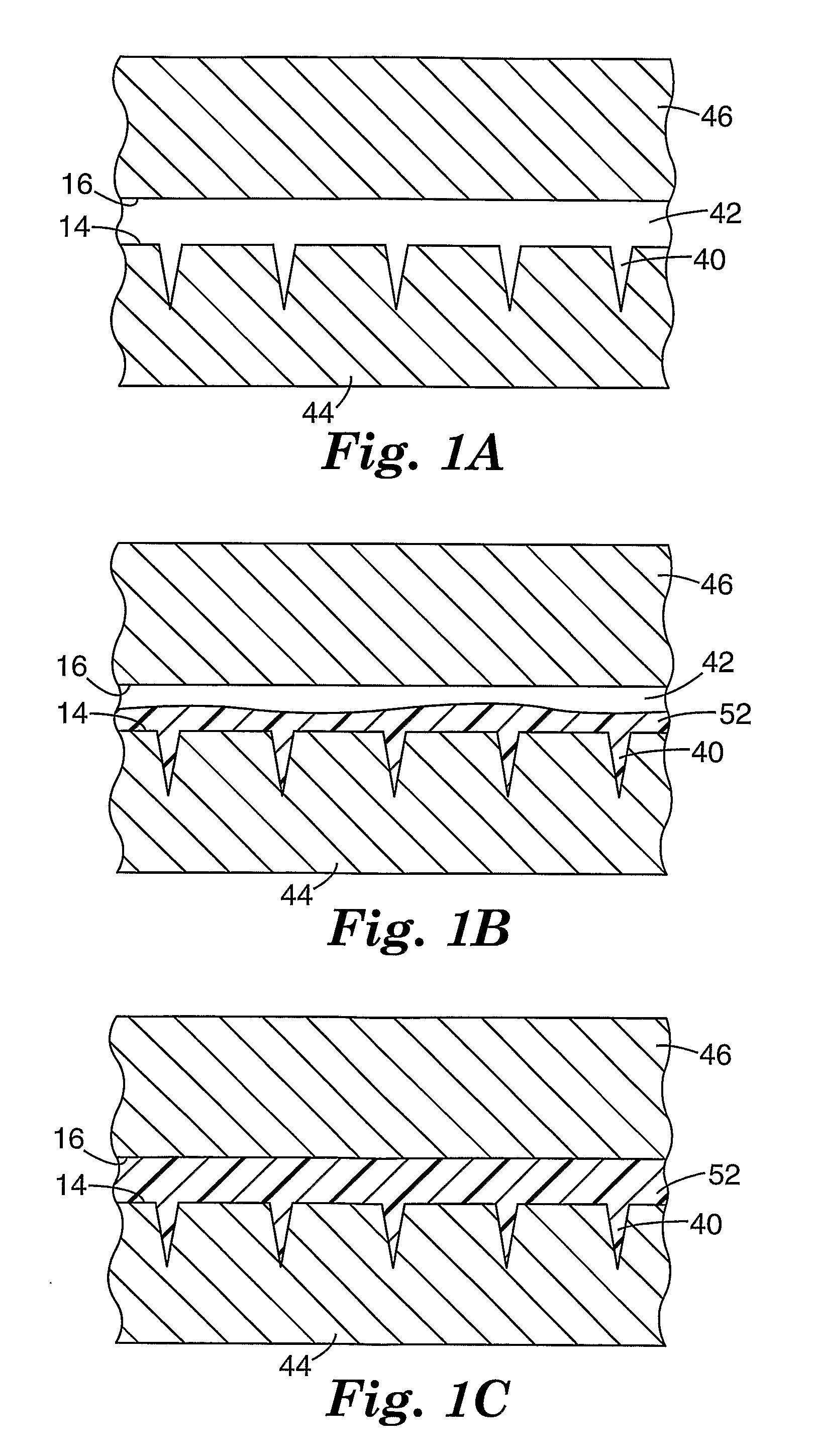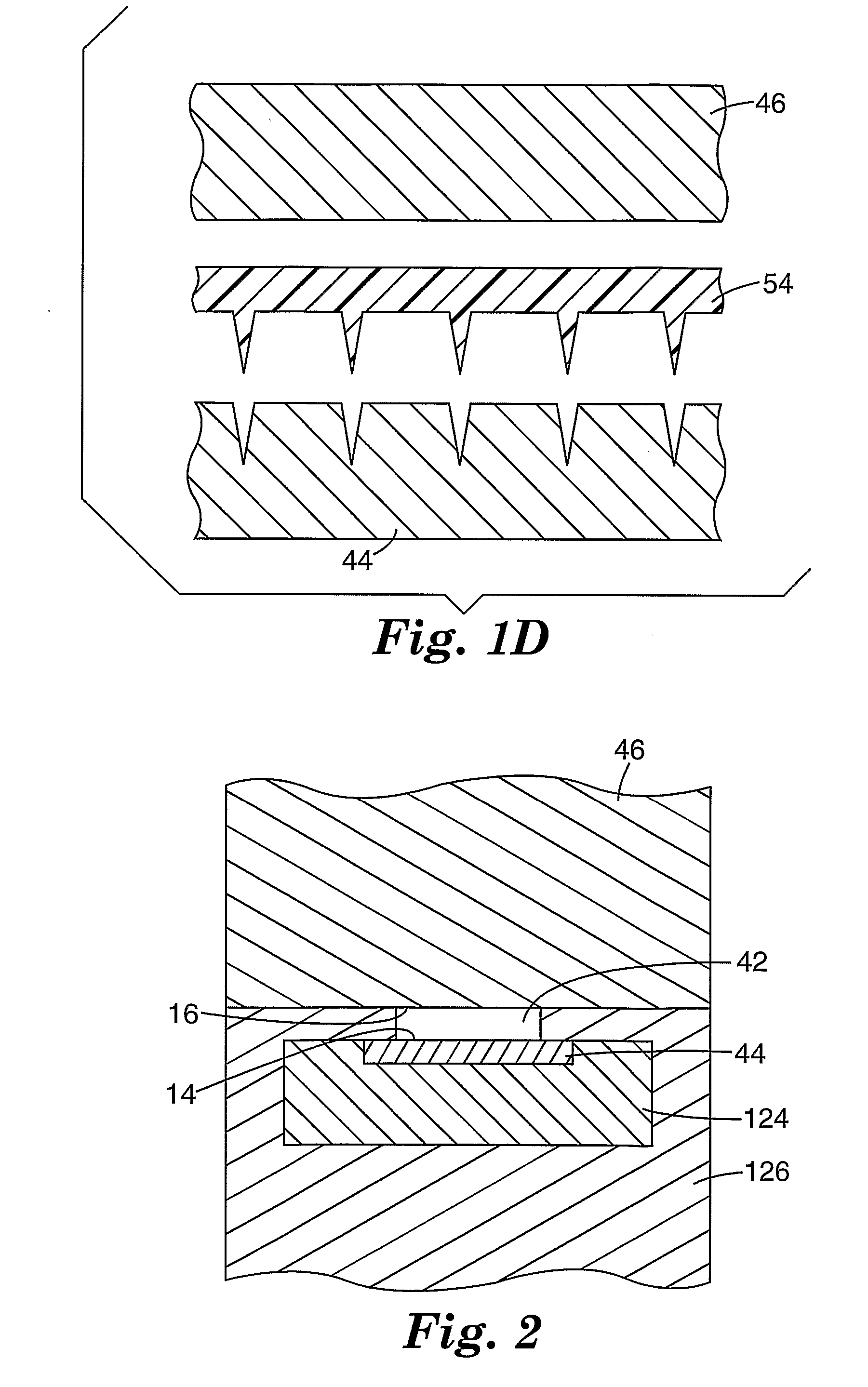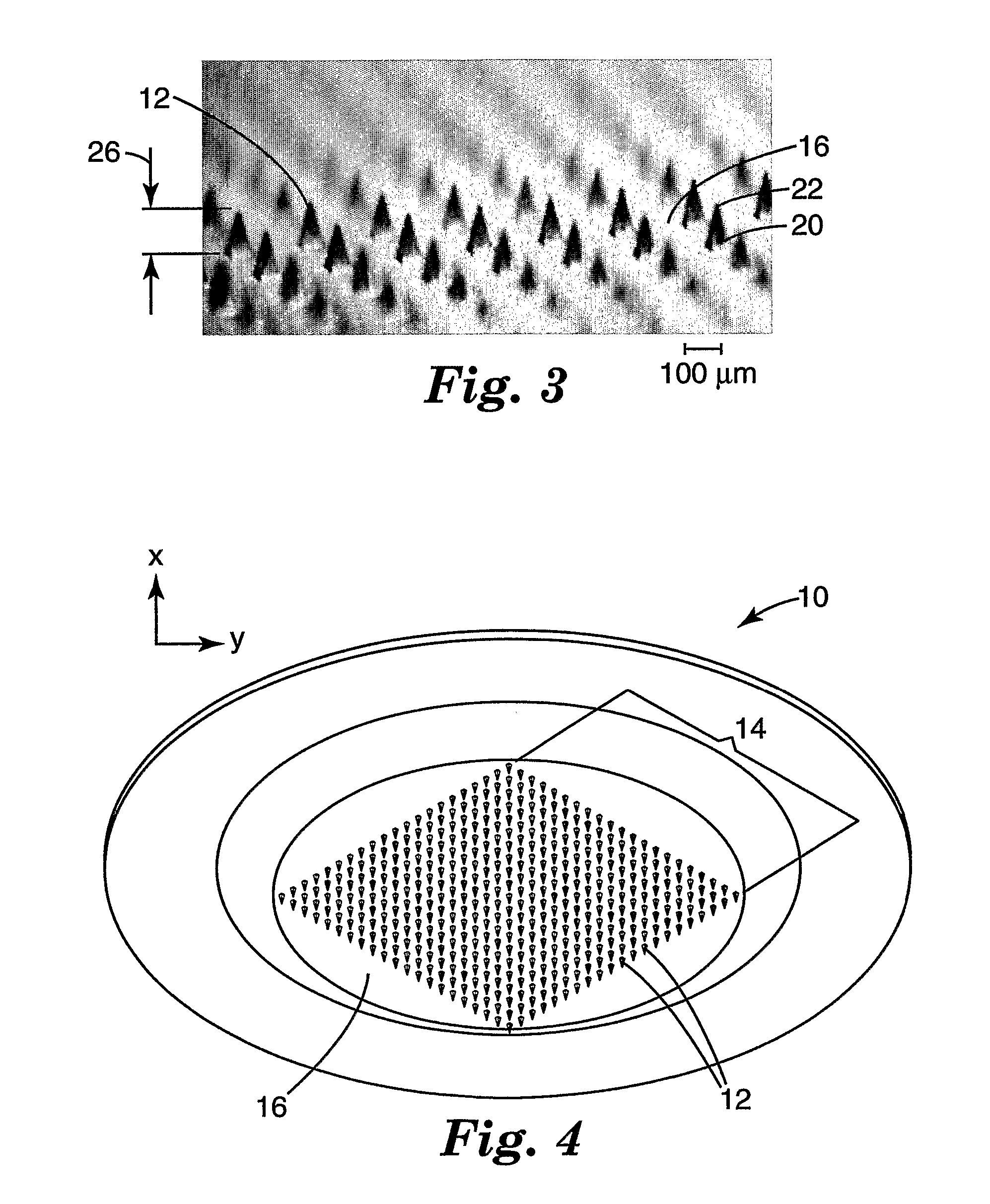Method of molding for microneedle arrays
a technology of microneedle arrays and molds, which is applied in the field of manufacturing microneedle arrays, can solve the problems of limited number of molecules demonstrated, difficult manufacturing of needle passageways, and limited size of needle passageways
- Summary
- Abstract
- Description
- Claims
- Application Information
AI Technical Summary
Benefits of technology
Problems solved by technology
Method used
Image
Examples
examples
[0058] Examples 1-12
[0059] Molded microneedle arrays were prepared according to the general procedures described above using a 55-ton injection molding press (Milacon Cincinnati ACT D-Series Injection Molding Press) equipped with a thermocycling unit (Regoplas 301 DG Thermal Cycling Unit). Polycarbonate pellets were loaded into a reciprocating screw and heated until molten. The negative mold insert was heated to a specified temperature (hereafter referred to as the “mold temperature at injection”) above the softening temperature of the material to be molded. The molding cycle was initiated by closing the mold chamber, clamping the mold with 55 tons of force, and injecting a first portion (approx. 50-80% of the part size volume) of the total amount of material from the reciprocating screw into the negative mold insert. The first portion of material was injected into the negative mold insert at a fixed velocity (hereafter referred to as the “injection velocity”). After injecting the ...
examples c1-c2
[0063] Molded microneedle arrays were prepared according to the procedure described in Examples 1-12, with the exception that the mold temperature at injection on each array was reduced to 310° F. (154.4° C.) and 260° F. (126.7° C.) respectively. The comparative examples details of the injection velocity, pack pressure, hold time, mold temperature at injection, mold temperature at ejection, and resulting needle height for each example is shown in Table 1.
TABLE 1InjectionMoldMoldAverageVelocityPackHoldtemperaturetemperatureneedleExample[inches / sec,Pressuretimeat injectionat ejectionheightNumber(cm / sec)][psi, (Mpa)][sec][° F., (° C.)][° F., (° C.)][microns]10.50120004340280141(1.27)(81.6)(171.1)(137.8)20.50120006340280139(1.27)(81.6)(171.1)(137.8)30.50120002340280134(1.27)(81.6)(171.1)(137.8)40.50 80004340280133(1.27)(54.4)(171.1)(137.8)50.50160004340280141(1.27)(108.9) (171.1)(137.8)61.50120004340280139(3.81)(81.6)(171.1)(137.8)70.30120004340280141(0.76)(81.6)(171.1)(137.8)80.50120...
examples 13-16
[0064] Molded microneedle arrays were prepared according to the procedure described in Examples 1-12, with the exception that individual needles on each array had a height of 375 microns and a base side-length of 125 microns. The needles were spaced in a regular array with a distance of 600 microns between the tips of adjacent needles. Details of the injection velocity, pack pressure, hold time, mold temperature at injection, and mold temperature at ejection used for each example is shown in Table 2.
TABLE 2InjectionMoldMoldAverageVelocityPackHoldtemperaturetemperatureneedleExample[inches / sec,Pressuretimeat injectionat ejectionheightNumber(cm / sec)][psi, (Mpa)][sec][° F., (° C.)][° F., (° C.)][microns]130.50140004340280323(1.27) (95.3)(171.1)(137.8)140.50160004340280322(1.27)(108.9)(171.1)(137.8)150.50160004360270335(1.27)(108.9)(182.2)(132.2)160.50160004370270332(1.27)(108.9)(187.8)(132.2)
PUM
| Property | Measurement | Unit |
|---|---|---|
| aspect ratio | aaaaa | aaaaa |
| aspect ratio | aaaaa | aaaaa |
| softening temperature | aaaaa | aaaaa |
Abstract
Description
Claims
Application Information
 Login to View More
Login to View More - R&D
- Intellectual Property
- Life Sciences
- Materials
- Tech Scout
- Unparalleled Data Quality
- Higher Quality Content
- 60% Fewer Hallucinations
Browse by: Latest US Patents, China's latest patents, Technical Efficacy Thesaurus, Application Domain, Technology Topic, Popular Technical Reports.
© 2025 PatSnap. All rights reserved.Legal|Privacy policy|Modern Slavery Act Transparency Statement|Sitemap|About US| Contact US: help@patsnap.com



